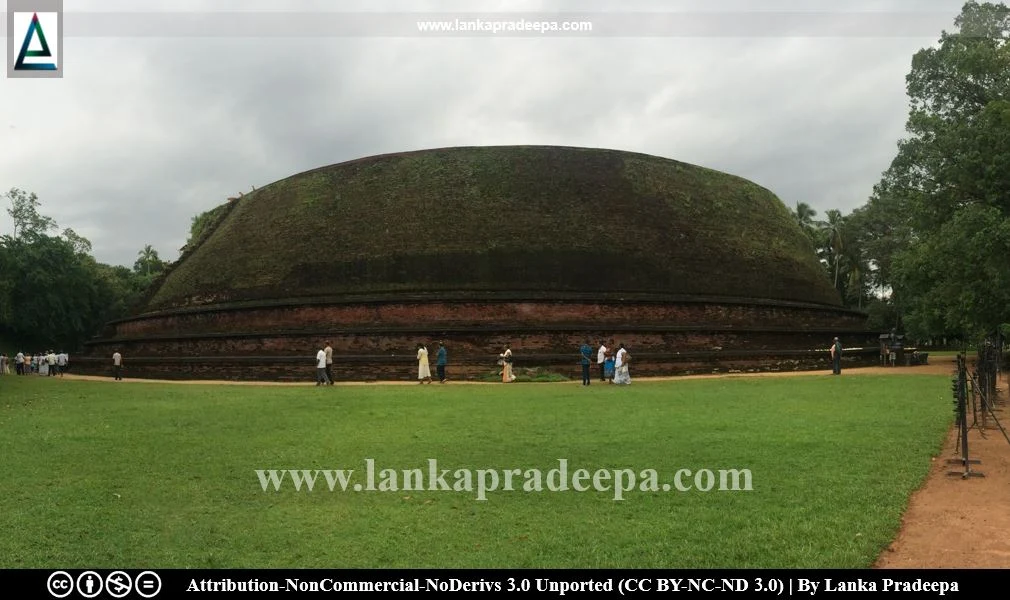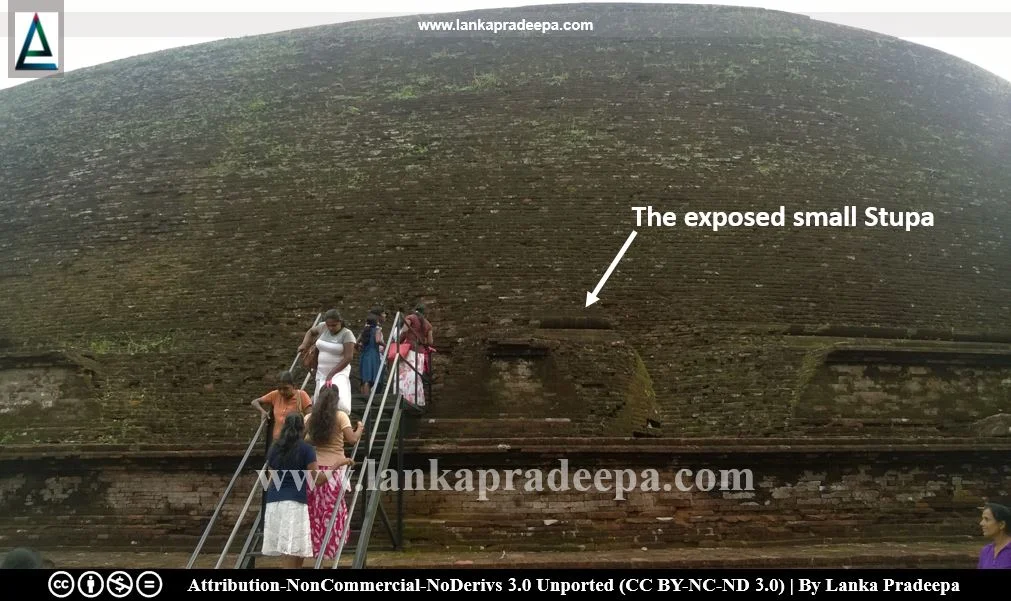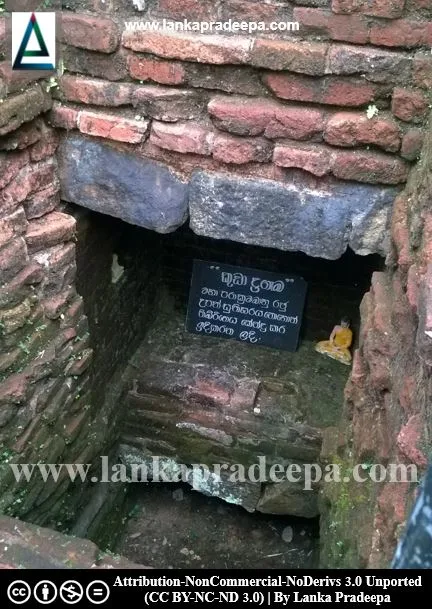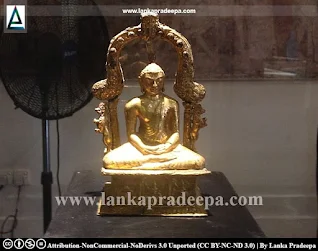
Kota Vehera, also known as Cuthighara/Suthighara Cetiya (Sinhala: දැදිගම කොට වෙහෙර, සූතිඝර වෙහෙර චෙෙත්යය), is an ancient Stupa located in the village of Dedigama in Kegalle District, Sri Lanka. The site can be reached by travelling along the Nelundeniya - Galapitamada road (B540) about 3.2 km distance from the Nelundeniya junction.
History
There is evidence that the history of Dedigama goes as far back as the 2nd century A.D. (Wikramasinghe, 1990). During the 12-14 centuries A.D., Dedigama served as the residence of provincial leaders of Dakkhinadesa (Abeyawardana, 2002). In several chronicles and inscriptions, Dedigama is called by different names such as Punkhagama (in Pali Mahawamsa), Dathigama (in Thisara Sandeshaya), Jatigama (in Uttamala Sandeshaya), and Gnathigama (in the inscription of King Parakramabahu IV).
The Stupa has been built at the site where King Parakramabahu I (1153-1186 A.D.) was born (Abeyawardana, 2002; Wikramasinghe, 1990). According to Mahawamsa, King Manabharana, the father of King Parakramabahu I, used Punkhagama as the capital city of the southern locality. It is mentioned that King Parakramabahu I was born there and afterwards, he built the Cuthighara (Suthighara) Stupa of 120 cubits (180 ft.) tall on the site of the house in which he was born (Nicholas, 1963). The ancient Punkhagama, according to Paranavitana, is the modern Dedigama and the ruined Stupa which is today known as Kota Vehera is the ancient Cuthighara Dagoba built by King Parakramabahu I (Nicholas, 1963).
According to the accounts given in Thisara Sandeshaya (a Sinhalese literary work), Dedigama was the capital of King Parakramabahu V [(1344-1359 A.D.) Abeyawardana, 2002].
Discovery
The ruined Dedigama Stupa was discovered during the period of British rule by F.M. Price, the Government Agent in the Kegalle area (Wikramasinghe, 1990).
Discovery
The ruined Dedigama Stupa was discovered during the period of British rule by F.M. Price, the Government Agent in the Kegalle area (Wikramasinghe, 1990).
The Stupa and artefacts
The excavation and conservation activities of the site were carried out in 1951 (Wikramasinghe, 1990). During the excavations, a number of artefacts including a unique hanging lamp known as Eth Pahana (elephant lamp) were discovered from the Kotavehera Stupa. Most of the antiquities discovered from the site are presently preserved in the Dedigama Museum located nearby.
Stupa
The Stupa was excavated from the summit of the ruined mound. Several relic chambers with remnants of wall paintings depicting the figures of humans, animals, flowers, and trees were discovered during these excavations (Wikramasinghe, 1990). The present Stupa is 47 feet in height and has a diameter of about 804 feet.
Stupa
The Stupa was excavated from the summit of the ruined mound. Several relic chambers with remnants of wall paintings depicting the figures of humans, animals, flowers, and trees were discovered during these excavations (Wikramasinghe, 1990). The present Stupa is 47 feet in height and has a diameter of about 804 feet.
Eth Pahana
In 1951, two Eth Pahana lamps similar in design were discovered in the upper relic chamber of Suthighara Stupa at Dedigama (Jayawardana & Peiris, 2009; Udayakumari, 2016). The lamp has been made out of bronze and predominantly represents a figure of an elephant (hollow cast) carrying two mahouts on its shoulder. The elephant is 12.6 cm tall and 6.1 cm wide and stands on the top of a dish base (oil receptacle). As it was found in the relic chamber of Suthighara Stupa, the lamp has been dated by scholars to the reign of King Parakramabahu I; to the 12 century A.D. The lamp is presently on the display in the Gallery of Polonnaruwa Period at the Colombo National Museum.
In 1951, two Eth Pahana lamps similar in design were discovered in the upper relic chamber of Suthighara Stupa at Dedigama (Jayawardana & Peiris, 2009; Udayakumari, 2016). The lamp has been made out of bronze and predominantly represents a figure of an elephant (hollow cast) carrying two mahouts on its shoulder. The elephant is 12.6 cm tall and 6.1 cm wide and stands on the top of a dish base (oil receptacle). As it was found in the relic chamber of Suthighara Stupa, the lamp has been dated by scholars to the reign of King Parakramabahu I; to the 12 century A.D. The lamp is presently on the display in the Gallery of Polonnaruwa Period at the Colombo National Museum.
Reliquaries
These two reliquaries which are made of gold were discovered from the Kota Vehera Stupa. The larger reliquary is 8.7 cm in height and represents a miniature Stupa of the Amalaka fruit [Nelli fruit shape (Phyllanthus emblica)] shape. The Hathares Kotuwa (the square enclosure) and the Koth Kerella over the dome part represent the Stupa form characteristic of the 12th century. A small crystal reliquary containing the relics in a gold capsule was found enshrined within this large reliquary.
These two reliquaries which are made of gold were discovered from the Kota Vehera Stupa. The larger reliquary is 8.7 cm in height and represents a miniature Stupa of the Amalaka fruit [Nelli fruit shape (Phyllanthus emblica)] shape. The Hathares Kotuwa (the square enclosure) and the Koth Kerella over the dome part represent the Stupa form characteristic of the 12th century. A small crystal reliquary containing the relics in a gold capsule was found enshrined within this large reliquary.
The small reliquary which also has a shape similar to the larger reliquary is representative of the early medieval Stupa form of Sri Lanka.
Reference: National Museum of Colombo
Meditating Buddha
Dedigama slab inscription
Reign: 9th regnal year of Bhuvanekabahu VI
Period: 15th century A.D.
Script: Modern Sinhala
Language: Modern Sinhala
Content: The inscription was engraved on stone by Vikramasingha Adhikara on the orders of his majesty, King Bhuvanekabahu VI. It has been established to allay the suspicion of fear from the minds of the people of the Satara Korale who were subdued after a rebellion against King Bhuvanekabahu VI. According to the inscription, an amnesty was granted to the inhabitants of the Satara Korale, by the king.
Citation: The information board at the site by the Department of Archaeology and the Ministry of National Heritage.


.
The seated Buddha statue that was discovered from the Dedigama Kota Vehera Stupa is presently on the display at the National Museum of Colombo.
The gold
colour statue with an inner core of Sandalwood paste is about 16 cm in
height and is a work belonging to the 12th century A.D. It depicts the Buddha in meditation (Samadhi) posture. The Buddha is sitting on a pedestal decorated with the Vajra symbol which is considered a common element found during the Polonnaruwa Period. Behind the Buddha is a decorated Makara Thorana (a dragon arch) adorned with gemstones. The dragon arch is held in position by two pillars and also by two rampant lions.
Reference: National Museum of Colombo
A stone-slab inscription of King Bhuvanekabahu VI (1470-1478 A.D.) is found set up in front of the Bodhi tree in the Dedigama Raja Maha Viharaya premises situated near the Kota Vehera Stupa.
Dedigama slab inscription
Reign: 9th regnal year of Bhuvanekabahu VI
Period: 15th century A.D.
Script: Modern Sinhala
Language: Modern Sinhala
Content: The inscription was engraved on stone by Vikramasingha Adhikara on the orders of his majesty, King Bhuvanekabahu VI. It has been established to allay the suspicion of fear from the minds of the people of the Satara Korale who were subdued after a rebellion against King Bhuvanekabahu VI. According to the inscription, an amnesty was granted to the inhabitants of the Satara Korale, by the king.
Citation: The information board at the site by the Department of Archaeology and the Ministry of National Heritage.
An archaeological reserve
The
land plot named Kota Vehera Puravidya Sthanaya (F.V.P. 300 lot 1,2,3, & 4, lot no 757, F.V.P. no. 1,2,3,4, & 5 plots, No. A119 F.V.P. 6: consisting of 4 acres, 0 roods, 13.3 perches) situated in Dedigama village in the
Divisional
Secretary’s Division, Warakapola is an archaeological reserve, declared by a government Gazette notification published on 22 September 1967.


.
References
1) Abeyawardana, H.A.P., 2002. Heritage of Sabaragamuwa: Major natural, cultural and historic sites. Sabaragamuwa Development Bank and The Central Bank of Sri Lanka. ISBN: 955-575-077-7. pp.59-60.
2) Jayawardana, C., and Peiris, K., 2009. Ancient micro scale hydraulic elements in Sri Lanka. Engineer - Vol. XXXXII, No. 03. The Institution of Engineers, Sri Lanka. pp.51-56.
3) Nicholas, C. W., 1963. Historical topography of ancient and medieval Ceylon. Journal of the Ceylon Branch of the Royal Asiatic Society, New Series (Vol VI). Special Number: Colombo. Royal Asiatic Society (Ceylon Branch). p.123.
4) Udayakumari, P.A.N. 2016. Relationship between Elephant Figure and Hydrostatic Principle of Eth Pahana in Dedigama. In: International Conference on Asian Elephants in Culture & Nature, 20th – 21st August 2016. p.22.
5) The Gazette notification. no: 14767. 22 September 1967.
6) Wikramasinghe, N., 1990. Mural painting (800 A.D.-1200 A.D.). Nandadeva W. (Editor in chief), Archaeological Department Centenary (1890-1990): Commemorative series (Vol. V). Painting. Department of Archaeology (Sri Lanka). p. 65.
2) Jayawardana, C., and Peiris, K., 2009. Ancient micro scale hydraulic elements in Sri Lanka. Engineer - Vol. XXXXII, No. 03. The Institution of Engineers, Sri Lanka. pp.51-56.
3) Nicholas, C. W., 1963. Historical topography of ancient and medieval Ceylon. Journal of the Ceylon Branch of the Royal Asiatic Society, New Series (Vol VI). Special Number: Colombo. Royal Asiatic Society (Ceylon Branch). p.123.
4) Udayakumari, P.A.N. 2016. Relationship between Elephant Figure and Hydrostatic Principle of Eth Pahana in Dedigama. In: International Conference on Asian Elephants in Culture & Nature, 20th – 21st August 2016. p.22.
5) The Gazette notification. no: 14767. 22 September 1967.
6) Wikramasinghe, N., 1990. Mural painting (800 A.D.-1200 A.D.). Nandadeva W. (Editor in chief), Archaeological Department Centenary (1890-1990): Commemorative series (Vol. V). Painting. Department of Archaeology (Sri Lanka). p. 65.
Explore Other Nearby Attractions
Location Map (Google)
This page was last updated on 2 July 2023






